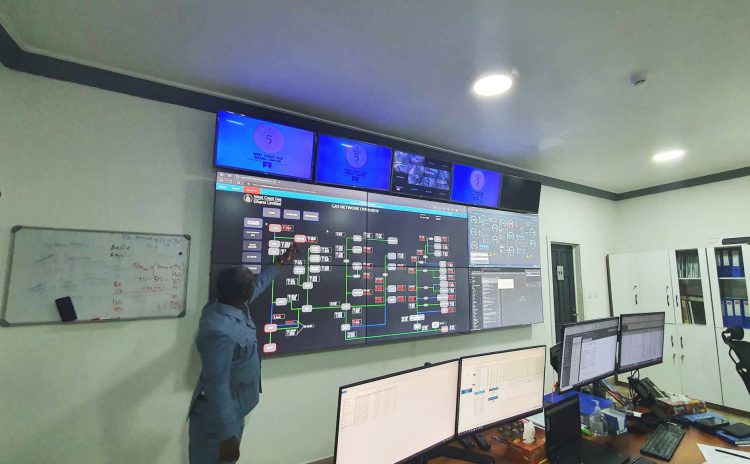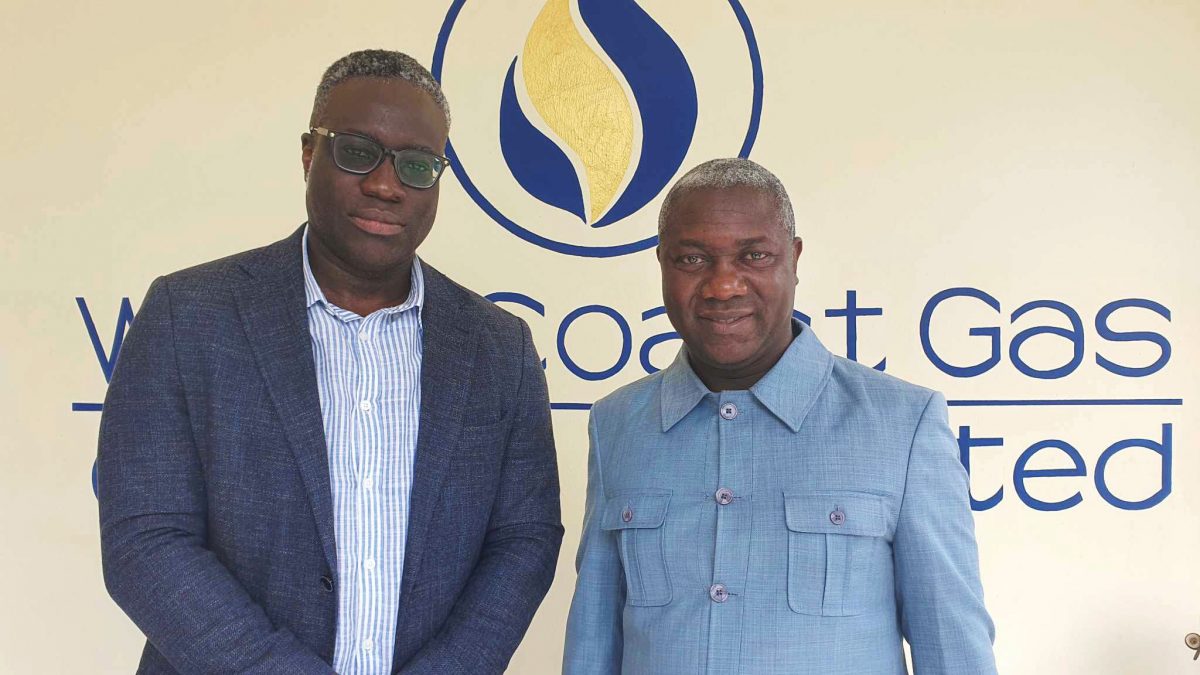While ExxonMobil will have its own monitoring facility at its Ogle, East Coast Demerara headquarters, the government has underscored the importance of independent real-time monitoring (RTM) of this country’s oil and gas resources and will ensure simultaneous oversight through an independent company.
Minister of Natural Resources Vickram Bharrat told the Stabroek News that Guyana will be implementing independent observation and analysis processes, similar to that being carried out in Ghana and other countries, for both crude oil production, and gas supplied to the Wales gas-to-shore plant on the West Bank Demerara. “This is the objective for future monitoring. We are working to strengthen all the regulatory frameworks to include monitoring,” he said, while noting that strengthening the Environmental Protection Agency’s capacity is also being actively pursued.

During a visit to Accra, Ghana, Stabroek News was able to have a first-hand look at the daily operations of West Coast Oil and Gas Company, which monitors the Ghanaian oil and gas resources.
‘Fair share’
During a tour of the facility, the company’s Chief Executive Officer Emmanuel Johnson explained that while there is mutual trust between governments and international oil companies, countries will want to have safeguarding measures to ensure that what the oil companies report as being produced, correlates with the governments’ independent figures.
“Crude oil and natural gas resources can be a major source of revenue for a nation. Monitoring these resources enables the government to validate the accuracy of production estimates, assess well performance, production levels, distribution, and consumption of these resources, track production volumes and sales reported by oil and gas exploration and production companies, ensuring that the country receives its fair share of revenue [taxes and royalties] from these resources. This would prevent the underreporting of volumes and impede unauthorised extraction, reducing the risk of income loss due to illegal operations [flaring restrictions]. This data would also aid in resource management aimed at making evidence-based decisions about production levels, export volumes, and long-term resource development plans,” Johnson explained.
From a strict access-controlled room, Johnson, one of Ghana’s top chemical engineers, pointed out that the process which involves the acquisition and aggregation of sensor data that are transmitted in a secure format to a data centre for processing, is manned by locals who were trained by the company. Back-end encryption and the monitoring of privileged account access are also part of the tiered security measures to safeguard data collected and Johnson believes that even if an employee gets some information or if there is hacking, there is not much anyone can do with the data.
On the process itself, he related, “Real-time remote monitoring entails collecting and analysing data from both onshore and offshore facilities in real-time using data transfer and transmission technologies. At the site or field being monitored, several sensors and monitoring devices are installed for data acquisition. Parameters such as flow rates, pressures, temperatures, and quality and or composition of data are remotely measured and transmitted to a data monitoring centre for monitoring. Monitoring devices and sensors are installed at wellheads, along pipelines, at metering stations, storage facilities, refineries, and other appropriate sites to allow for remote monitoring.
“Data acquired remotely is transmitted to a centralised control centre or monitoring facility via wired or wireless communication systems such as satellite links, cellular networks, or dedicated data networks. The selection of communication technology to be used is influenced by factors such as location, availability, dependability, and security requirements.
“The transmitted data is received and stored in databases or cloud-based platforms at the monitoring centre, thereby enabling ease of accessibility to the data and also, ensuring long-term storage of the data,” he added.
‘Parameters’
At the monitoring centre, such as the one at West Coast, data is processed, analysed, and visualised, using software and tools created specifically for real-time monitoring. For example, a SCADA (Supervisory Control and Data Acquisition) system is employed in analysing and visualising real-time data.
Johnson explained how the system works from the back-end. “These programs execute statistical analysis, and algorithmic processing to understand the data and create useful insights by identifying patterns, finding discrepancies, and analysing parameters against acceptance criteria such as quality specifications and flow and pressure benchmarks. Based on data and analysis, suitable responses to any discovered discrepancies may be taken; for example, adjusting supply and demand rates and taking operational decisions to prevent commercial liabilities,” he said.
“In addition to analysing data and facilitating informed decisions within the petroleum network, production and consumption values transmitted at the end of each production day would be recorded and validated against values reported by stakeholders or customers within the oil-and-gas value chain, ensuring transparency, efficiency and accuracy in billing and invoicing of these companies.
“Following the processing stage, data is made available to the end-users via an interface. Real-time monitoring of petroleum resources can supplement decision support for oil and gas field operations by providing valuable contributions to the petroleum value chain using alarms and alerts, effective knowledge management, and proficient data interpretation. As such, oil and gas monitoring is of significant importance to a nation for several reasons,” he explained.
Strategic planning
Johnson posited that real-time monitoring also offers useful information for strategic planning and decision-making. “To build long-term energy strategies, investment plans, and policies, the government can evaluate production patterns, market conditions, and global energy dynamics. It enables the government to adjust to changing market conditions, optimise resource allocation, and effectively negotiate with international oil companies (IOCs) to protect national interests,” he stated.
“Overall, oil and gas monitoring is crucial for ensuring energy security, driving economic growth and generating revenue. It provides stakeholders with fast access to decisive information across the oil and gas value chain from remote locations, allowing for quick decision-making and effective national resource and operation management.”
The CEO noted that the company is aware of the lure and the temptation of monetary and other inducements, that staff may be offered from IOCs (international oil companies), and to mitigate such occurrences, his company ensures that salaries are commensurate with experience and match or are beyond what top private sector personnel receive. Staff lifestyle is also monitored. Johnson pointed out, “If we see one of our staff with a Mercedes tomorrow, we have to investigate. We have a rigid system for employing persons… We also constantly vet our staff because we understand what we are dealing with …”
Contention
But Johnson was quick to warn that despite the many benefits of oil-and-gas monitoring and accounting, the implementation of independent monitoring by a country “can be a source of contention for oil companies, as it serves as a preventive measure against underreporting volumes and may introduce the implementation of excessive regulations.”
He noted that some oil majors “push back” against government proposals to have independent monitoring and may press the case that the duplicity was not necessary. However, he reasoned that if the companies were confident in their numbers and reports, then there would be no resistance to having additional oversight.
And concerning the meters used for reading the volume of resources being distributed, he suggested that it was safer to use those of the oil companies because that way, “they cannot say your meter malfunctioned or is not a good one or dispute the figures because it is from their meters and they should have the same reading.”
Nevertheless, he contended that balancing the interests of oil companies and the need for government oversight “is crucial to achieving sustainable and responsible practices in the oil and gas industry.”
‘Next wave’
Vice President Bharrat Jagdeo, whose portfolio also includes oversight of the oil and gas and energy sectors, has said that the government’s focus on monitoring would be ramped up, as the new model Production Sharing Agreement (PSA) would fix a lot of things.
“We are trying to deal with the framework first; and that is why you have seen us focus on a lot of things we criticised when we were in opposition [such as] the PSA, the Petroleum Act not being sufficient to manage a modern industry… we’re fixing those too. We criticised the Natural Resources Fund Act, we fixed that. We passed the new Local Content Law. So these are things that we said needed fixing,” he said while also mentioning the government’s decision to auction the oil blocks.
“I admitted the last time, that because our focus had been on the framework, the next wave of the attention of the ministry and of the government will be on building a greater monitoring facility. So once we strengthen the provisions, for example, on data, that Exxon has to supply, then we have to verify that that is actually happening. So the PSA will fix a lot of things about the extent of the data and the frequency of the data that they have to submit, but we would have to verify and this is where the monitoring capability [comes in]” he added.
Jagdeo said that ExxonMobil will have an “operating centre that is remote in the headquarters” [at Ogle], and it is for this reason that when government refers to the Ogle facility, “it’s not just a headquarters” as “it would have an operating centre there where they can remotely address any issue on the rigs, like shut off and things like that.”
Government was still at that time mulling the medium of internet connectivity for its independent station. “We hope either to have a feed there on [Exxon’s fibre optic cable] or to independently have, either through VSAT or the fibre, a monitoring capability that will verify how much oil is flowing through the pipelines. We will have real-time data. We are not waiting for the submission but we would have real-time data, building our own review capability,” he said.
Jagdeo, who also visited Ghana and had meetings with top government officials there on oil and gas, told this newspaper of the many collaborations forged. Guyana’s Local Content Act has elements of Ghana’s policy and Jagdeo was impressed at the focus on transfer of skills and knowledge to locals. He had also visited West Coast Gas.
“When I was in Ghana, I visited a group that was doing this for the gas fields, there we had a Canadian company that came there that is big into this. [It is] Guyanese owned, and they have been pressing us to move on this issue. They have sent proposals,” he said.
“We said that we want to go out to tender. We will go out to tender, but of course there will be preferences if there is a Guyanese-owned company that can do this and they have great international capability. They are doing this in Canada already, looking at offshore monitoring et cetera.”
The Vice President said although monitoring systems “are a bit deficient at this point,” the government is moving swiftly to address this issue and it will be its main agenda. “This is the next wave of what we have to do. It’s the progression,” he said.










